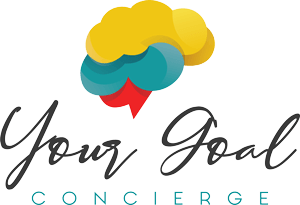The AI Paradox: Why AI Can Add to Your Workload (and How to Fix It)
Erica Kesse
The body content of your post goes here. To edit this text, click on it and delete this default text and start typing your own or paste your own from a different source.

Introduction: The Power of Pausing We often think leadership is about speed — moving fast, deciding fast, growing fast. But the most successful CEOs today know that the real edge comes from reflection . In an economy obsessed with action, the ability to stop and think deeply has become rare — and therefore, incredibly valuable. The Missing Skill in Leadership Development Many executives invest in strategy and performance coaching but overlook self-reflection. Yet reflection is where real leadership growth happens. It’s how CEOs identify blind spots, reframe assumptions, and improve decision-making. In therapy, this process is called holding space for yourself — creating time and emotional room to think without judgment. For CEOs, it’s a form of self-leadership that strengthens both mental health and organizational vision. Reflection Builds Strategic Clarity When you slow down to reflect, you activate System 2 thinking — deliberate, rational, and long-term. This helps CEOs avoid impulsive, emotion-driven decisions. Reflection questions to build clarity: What emotion is driving this decision? What assumption am I making that might be wrong? How does this choice align with our long-term purpose? Reflection turns leadership from reaction to strategy. The Mental Health Connection Leaders who never pause eventually burn out. Reflection isn’t indulgent — it’s a mental reset that prevents overload. It lowers stress hormones, restores perspective, and promotes creativity. In short, self-reflection is mental hygiene for CEOs. How to Build Reflection into Your Leadership Routine You don’t need hours of meditation. You need consistency. Here’s how top leaders make reflection a habit: Daily: End your day by noting one success and one lesson. Weekly: Set aside 30 minutes for “CEO thinking time.” No agenda — just clarity. Quarterly: Review major decisions. What worked? What patterns repeat? Make reflection as non-negotiable as your meetings. The Organizational Ripple Effect When CEOs lead reflectively, their teams follow suit. Reflection becomes part of the culture — encouraging learning over blame. This approach builds psychological safety and continuous improvement. A reflective CEO inspires a reflective organization — one that’s calm under pressure and always learning. In 2025, leadership isn’t about being the busiest person in the room — it’s about being the most self-aware. When you hold space for yourself to think, you make space for your organization to grow. That’s not just mental health — it’s strategic leadership.

When Leadership Starts to Take Too Much Every CEO knows what burnout feels like — that quiet exhaustion masked by productivity. You keep pushing because that’s what leaders do. But here’s the truth: if you don’t manage your boundaries , your brilliance won’t last. Boundaries aren’t barriers — they’re leadership systems that protect focus, time, and mental health. Why Boundaries Are Strategic, Not Selfish We often mistake saying “no” for being unhelpful or inflexible. But high-performing leaders understand that boundaries are an act of clarity . They communicate what matters most and protect the energy required to lead sustainably. Think of boundaries as your business infrastructure — invisible, but essential for stability. Without them, CEOs become reactive instead of strategic. With them, leaders stay composed, decisive, and clear-minded — the exact qualities that make organizations thrive. The Burnout Cycle CEOs Must Break Here’s how burnout quietly grows: You say yes to everything. You’re spread thin. You lose focus. You feel resentful or drained. This cycle hurts not just your health, but your organization’s health. When leaders are emotionally depleted, decision quality drops, communication becomes tense, and creativity disappears. The FIRM Approach to Setting Boundaries One of the most effective frameworks from the therapeutic world is the FIRM method : F — Frame the boundary clearly: “I’m available for strategy calls on Tuesdays.” I — Identify why it matters: “This helps me stay focused and give you my best.” R — Reinforce with consistency: Boundaries only work if they’re honored. M — Model it for others: When CEOs set boundaries, it gives permission for others to do the same. Boundaries aren’t rigid — they’re reliable. They show your team how to respect limits while still achieving results. How Boundaries Protect Mental Health Boundaries reduce the mental clutter that causes anxiety and fatigue. They create space for recovery and reflection — both vital for high-quality leadership thinking. When CEOs manage time wisely and say no when necessary, they model emotional regulation , the foundation of mental health. A calm leader creates a calm company. Boundaries in Action: Small Changes, Big Shifts Here are small but powerful boundary practices you can start today: Block “thinking time” on your calendar like a client meeting. End meetings five minutes early to reset before the next. Turn off notifications during deep work. Communicate your limits clearly and without apology. Over time, these small acts rebuild your energy and focus — and your team will respect you more, not less. The CEO’s New Role: Leading with Sustainability Leadership is no longer about endurance; it’s about sustainability. Boundaries are what allow CEOs to perform at their best without losing themselves in the process. They transform leadership from survival mode to strategic mastery. When you lead with boundaries, you show your team that clarity and care can coexist. And that’s what defines modern, mentally healthy leadership.

Leadership in the Age of Psychological Safety In today’s corporate world, success isn’t just about strategy. It’s about psychological safety . CEOs are realizing that performance peaks not when people are pushed, but when they feel secure enough to take risks and speak up. But here’s the challenge: how do you build that kind of trust without losing authority ? The answer lies in a powerful yet often misunderstood concept — holding space . What “Holding Space” Really Means for Leaders The term “holding space” comes from therapy, where it means being fully present with someone — without judgment, without trying to fix them, just allowing them to process. In leadership, holding space means creating an environment where employees can bring their ideas, mistakes, and emotions to the table safely. This isn’t about being soft; it’s about being strong enough to stay steady when others can’t. In practice, holding space as a CEO looks like this: Listening without interrupting or rushing to solutions. Asking, “What do you need to move forward?” instead of “Why didn’t you do this?” Allowing others to own their growth and decisions. It’s leadership built on presence, non-judgment, and agency — the three pillars of holding space. Presence: Leadership Beyond Multitasking We live in a world that rewards speed, yet presence requires slowing down. When leaders are distracted — checking emails mid-meeting, glancing at their phones — it signals disinterest and damages trust. But when you are fully present , you send an unmistakable message: “You matter.” Presence is contagious. Teams mirror their leaders. If you lead with calm attention, your organization learns to slow down and focus too — and that’s where creativity and better decisions happen. Non-Judgment: The Language That Builds Safety Many leaders unintentionally erode trust with judgmental language. Questions like “Why did you do that?” or “Who’s responsible for this?” trigger defensiveness. Instead, try curiosity-driven language: “How did you get to that conclusion?” “What’s the context behind this choice?” This small shift reframes conversations from blame to collaboration. Non-judgment doesn’t mean ignoring mistakes — it means addressing them with respect and clarity. Agency: Giving Teams Control Builds Loyalty Micromanagement is often fear disguised as leadership. But in healthy organizations, agency is empowerment . Let people choose how to solve problems, when possible. Set clear outcomes, then step back. Agency turns employees into owners — and owners care more deeply about results. As a CEO, showing trust in your team’s judgment builds the very loyalty and performance most leaders chase through control. Creating a Safe Culture Without Losing Authority Many executives fear that leading with empathy might make them appear weak. The truth is the opposite. When a leader can hold firm boundaries and offer empathy simultaneously, it creates stability and respect. Authority isn’t about domination — it’s about steadiness. Practical ways to build safe yet structured cultures: Clarify expectations early. Safety comes from knowing the rules of engagement. Celebrate learning, not just outcomes. Reward curiosity and reflection. Model accountability. Admit your own mistakes; it sets the tone for honesty. You don’t lose authority when you hold space — you earn deeper trust . The Business ROI of Psychological Safety Google’s Project Aristotle found that psychological safety was the number-one predictor of high-performing teams. When people feel safe, they innovate more, collaborate better, and stay longer. For CEOs, this means: Lower turnover More creative problem-solving Stronger alignment between purpose and performance A safe culture doesn’t weaken business — it strengthens the system from within. Holding space might sound therapeutic, but it’s one of the most strategic leadership tools of our time. When you blend empathy with boundaries, you build an organization that performs because it feels safe to be human. That’s how the best CEOs lead in 2025 — not just with vision, but with emotional intelligence, clarity, and care .
